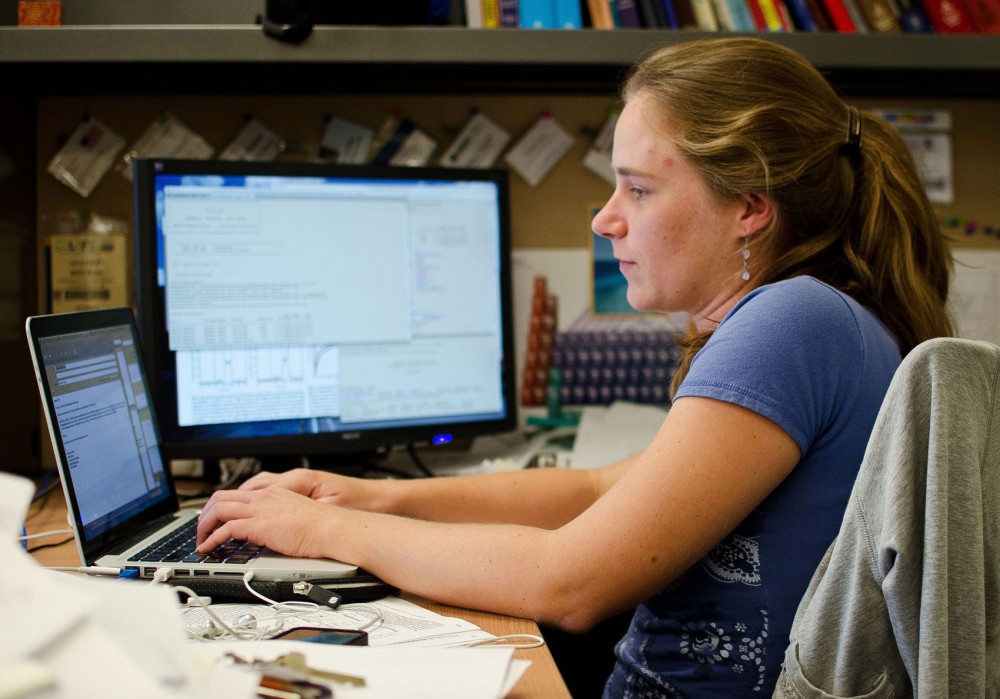The University of Minnesota is now home to two new centers that could potentially reduce carbon emissions and make solar energy more efficient.
The Department of Chemistry received $13.1 million from the U.S. Department of Energy to fund the centers, which officially began research Saturday.
“It’s kind of a tribute to the science [here] that for both centers they chose Minnesota,” said Christopher Cramer, director of the new Center for the Study of Charge Transfer and Charge Transport in Photoactivated Systems.
Both centers focus on theoretical chemistry and will use the Minnesota Supercomputing Institute to test models and programs.
Because the University already has this hardware, most of the grant money for both centers will be used to hire more researchers.
The Nanoporous Materials Genome Center will receive $8.1 million and partner with six other institutions.
Laura Gagliardi, director of the center, said the goal will be to create a database, or genome, of nanoporous materials in order to have a standard way of reporting the properties of these materials. This will allow researchers to make faster advances in the field because they’ll have a reference guide, she said.
Nanoporous materials can be used in carbon capture, for example, to sequester carbon dioxide and reduce pollution. Gagliardi said they will evaluate which materials could be best suited for this.
This center will also house experiments to develop and test nanoporous materials to confirm theorists’ predictions.
“It’s really about the interplay between modeling and experiment that we hope the most exciting results will arise,” Gagliardi said.
Cramer’s center includes two other institutions and will receive the other $5 million. Using theoretical chemistry, they’ll develop algorithms and programs to find better ways to capture solar energy.
Allison Dzubak, a doctoral candidate in Gagliardi’s lab, said this grant will allow them to start projects that they wouldn’t have been able to otherwise.
She said, “We’ll be able to jump in headfirst with lots of new chemistry.”


